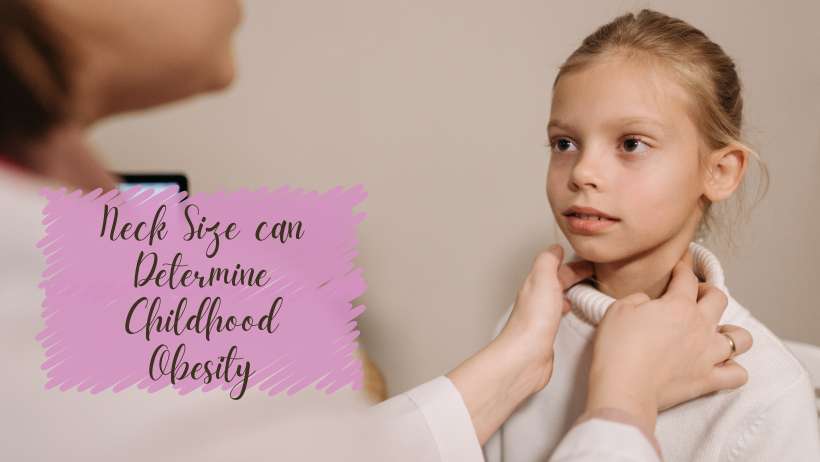A recent study showed that by measuring and determining the neck circumference, doctors can estimate whether a child is overweight or obese. This new method grabbed the attention of researchers when they faced problems during calculating the child’s body mass index (BMI) to spot childhood obesity. These problems arise as the children are still growing and they are not yet fully developed. Read on to know more about the determination of childhood obesity by measuring the neck size.

There are several more problems which include muscle mass, size or bone density. These problems can create an havoc in the statistics which can wrongly categorize some children as overweight or obese when in actual, they are just normal. The condition of obesity is connected to fat levels and fat deposits in the body. Different methods of determining and preventing childhood obesity should be considered for children. Also, to determine the causes of childhood obesity can be found out by implementing such novel methods. Neck size measurement is such type of a novel method.
Neck Size Standards for Children by Age and Gender
| Age Group (Years) | Average Neck Size – Boys (cm) | Average Neck Size – Girls (cm) |
|---|---|---|
| 3-5 | 25-27 | 24-26 |
| 6-8 | 27-29 | 25-27 |
| 9-11 | 29-31 | 27-29 |
| 12-14 | 31-33 | 29-31 |
| 15-17 | 33-35 | 30-32 |
Neck Size Measurement
This method was conceived by Dr. Olubukola Nafiu of the University of Michigan in Ann Arbor. By using this method, doctors can thoroughly determine and check if the children are normal, overweight or obese. This method is an useful tool in estimating and preventing causes of childhood obesity.
Apart from helping doctors to determine childhood obesity, neck size measurements also help in spotting those children who have a higher risk of suffering from sleep apnea. This condition, sleep apnea, is magnified in repeated stops. It occurs when tissue collapses from the back of the neck.
This study was conducted on 1,102 children and teens ranging from 6-18 years of age. These children were about to undergo surgery. Dr. Nafiu said that, since drugs concentrate in the body fats, children having a higher BMI will face more problems while waking up from anesthetics.
Health Risks Linked to Larger Neck Size in Children
Health Risks Linked to Larger Neck Size in Children
- Sleep Apnea: Restricted airway can lead to breathing issues during sleep.
- Cardiovascular Risks: Higher neck fat is linked to blood pressure and cholesterol issues.
- Diabetes Risk: Increased neck size may indicate higher chances of insulin resistance.
- Hypertension: Larger neck size correlates with high blood pressure.
- Chronic Inflammation: Neck fat often signals overall obesity, leading to inflammation.
- Self-Esteem Challenges: Physical differences can impact a child’s confidence and social interactions.
Recommendations for Parents and Caregivers
- Regular Monitoring: Measure your child’s neck size periodically during health check-ups.
- Consult Healthcare Providers: Seek medical advice if your child’s neck size exceeds recommended standards.
- Encourage a Healthy Lifestyle: Promote balanced nutrition and regular exercise to help maintain a healthy weight.
References
- “Neck Circumference Cut-off Points for Detecting Overweight and Obesity Among School Children in Northern Cyprus” (2022) (Source)
- “Neck Circumference and Its Relation with Body Fat Percentage in Children 5–10 Years Old” (2024) (Source)
- “Accuracy of Neck Circumference in Classifying Overweight and Obese US Children” (2014) (Source)
- “Neck Circumference as a Screening Measure for Identifying Children with High Body Mass Index” (2010) (Source)